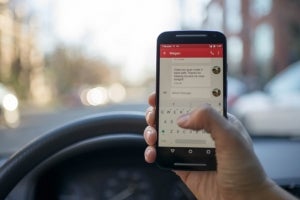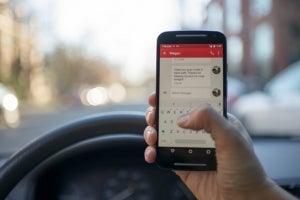CHOP Research Network: Novel Measures Of Cell Phone Use While Driving


Cell phone use while driving is a serious problem for adolescent drivers, placing them at risk for injury and death. We know from previous research that adolescents are heavily reliant on their cell phones for communication and connectivity, and admit to using their cell phone while driving in self-report surveys. In addition, we know from studies that use video cameras in cars that adolescents use their phones while driving.
My colleague and CIRP Senior Fellow Kit Delgado, MD, MS and I are particularly interested in how to measure behaviors related to cell phone use while driving, while staying on top of the quickly changing technology that adolescents use. Along with our co-authors, CIRP Senior Fellow Douglas Wiebe, PhD, Kristen Ward, MPH, and Yanlan Huang, MS, we recently published a study in Health Education and Behavior to examine novel measures of cell phone use while driving to better understand how and at what speeds adolescents use their cell phone while driving.
We enrolled a small group adolescent drivers who were licensed for less than 90 days to install a device in their vehicle and an application on their smartphone to see if we could measure interaction with the cell phone. We were able to collect data on how often they “unlocked” their cell phone, their trip length in miles and hours, and vehicle speed. The “unlock” was indicative of hand-held engagement with the phone, where the phone manually goes from the locked position to the unlocked position, requiring the hand-held engagement.
Results Show Engagement at High Speeds
We found that every adolescent unlocked their phone while driving and almost 50 percent of trips included an “unlock”:
- The average speed at which the adolescents unlocked their phone was 25 mph.
- The highest individual average speed at unlock was over 50 mph.
- Adolescent drivers, even those who were newly licensed, engaged with their cell phone during driving in some potentially high-risk scenarios such as at high speeds.
The information we gathered about how adolescent drivers engage with their phones at elevated speeds can help us better understand the nature of risky behaviors. Our results also help provide another picture of how adolescents are using their cell phone while driving.
We are seeing a lot of engagement, and we need to work to help reduce these risky behaviors in adolescents. This will likely take a multipronged approach that involves addressing individual factors, the role of parents, community norms and state-level policies affecting adolescent drivers.
This post was originally found on CHOP Research Institute